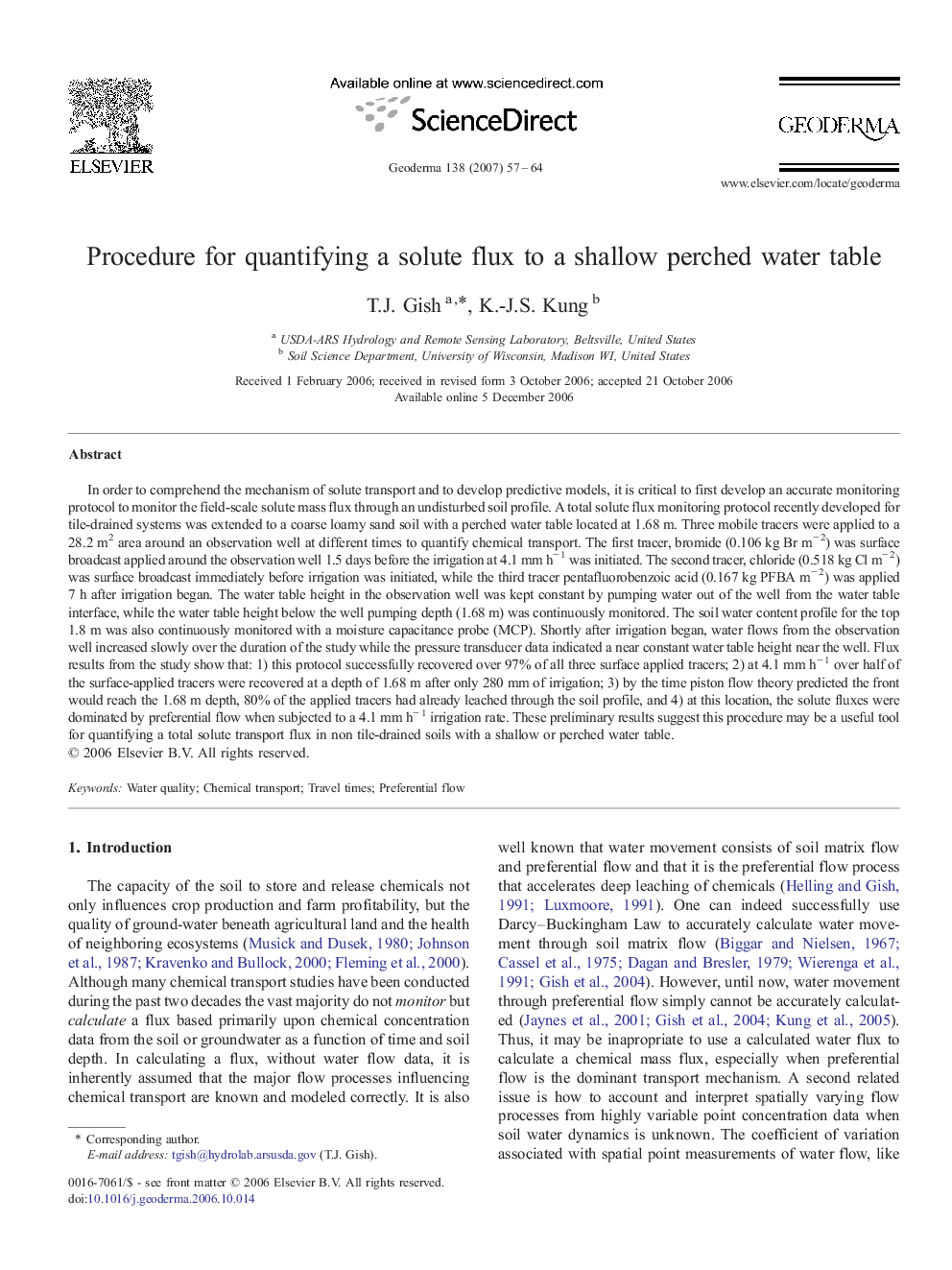| Article ID | Journal | Published Year | Pages | File Type |
|---|---|---|---|---|
| 4575374 | Geoderma | 2007 | 8 Pages |
In order to comprehend the mechanism of solute transport and to develop predictive models, it is critical to first develop an accurate monitoring protocol to monitor the field-scale solute mass flux through an undisturbed soil profile. A total solute flux monitoring protocol recently developed for tile-drained systems was extended to a coarse loamy sand soil with a perched water table located at 1.68 m. Three mobile tracers were applied to a 28.2 m2 area around an observation well at different times to quantify chemical transport. The first tracer, bromide (0.106 kg Br m− 2) was surface broadcast applied around the observation well 1.5 days before the irrigation at 4.1 mm h− 1 was initiated. The second tracer, chloride (0.518 kg Cl m− 2) was surface broadcast immediately before irrigation was initiated, while the third tracer pentafluorobenzoic acid (0.167 kg PFBA m− 2) was applied 7 h after irrigation began. The water table height in the observation well was kept constant by pumping water out of the well from the water table interface, while the water table height below the well pumping depth (1.68 m) was continuously monitored. The soil water content profile for the top 1.8 m was also continuously monitored with a moisture capacitance probe (MCP). Shortly after irrigation began, water flows from the observation well increased slowly over the duration of the study while the pressure transducer data indicated a near constant water table height near the well. Flux results from the study show that: 1) this protocol successfully recovered over 97% of all three surface applied tracers; 2) at 4.1 mm h− 1 over half of the surface-applied tracers were recovered at a depth of 1.68 m after only 280 mm of irrigation; 3) by the time piston flow theory predicted the front would reach the 1.68 m depth, 80% of the applied tracers had already leached through the soil profile, and 4) at this location, the solute fluxes were dominated by preferential flow when subjected to a 4.1 mm h− 1 irrigation rate. These preliminary results suggest this procedure may be a useful tool for quantifying a total solute transport flux in non tile-drained soils with a shallow or perched water table.
